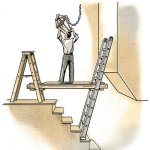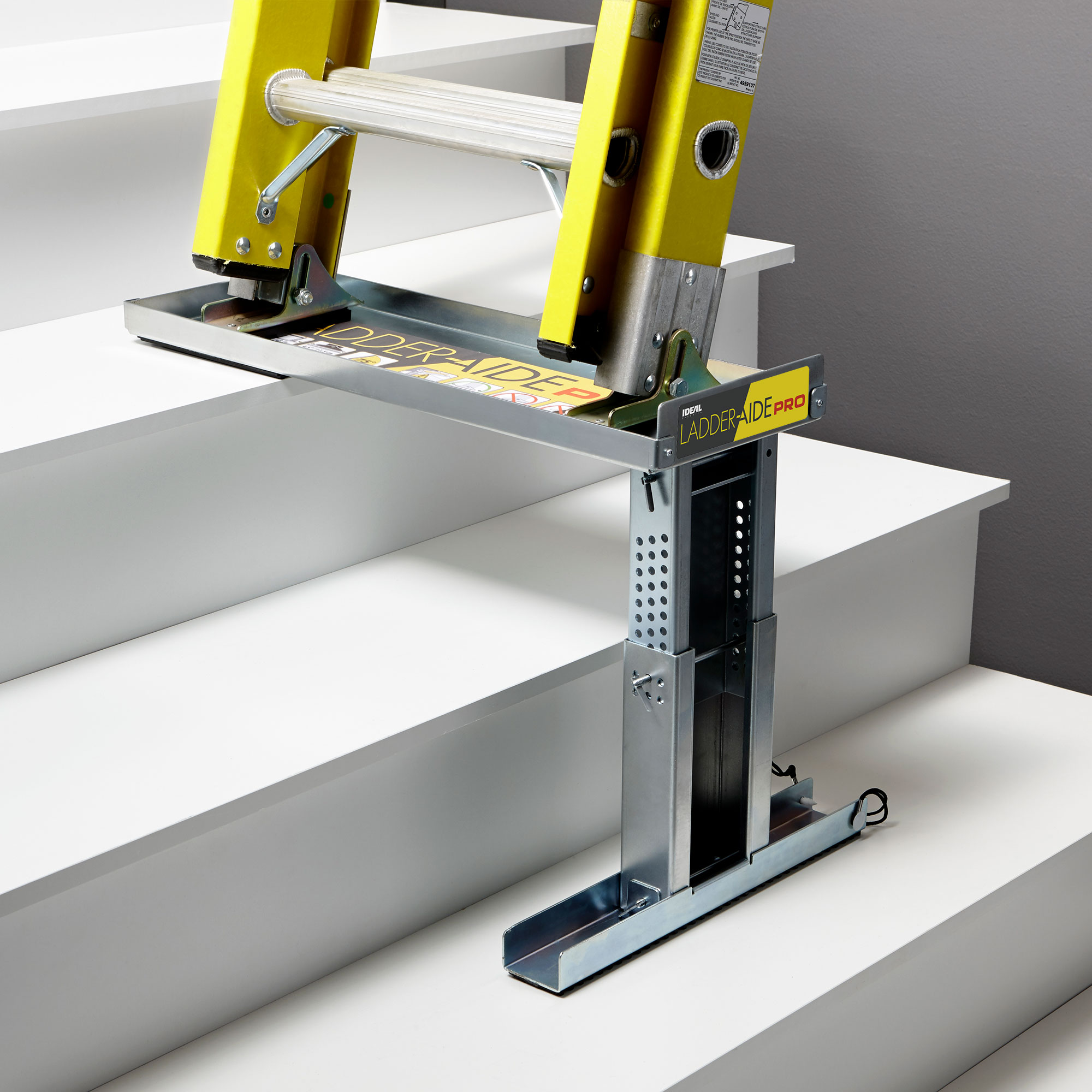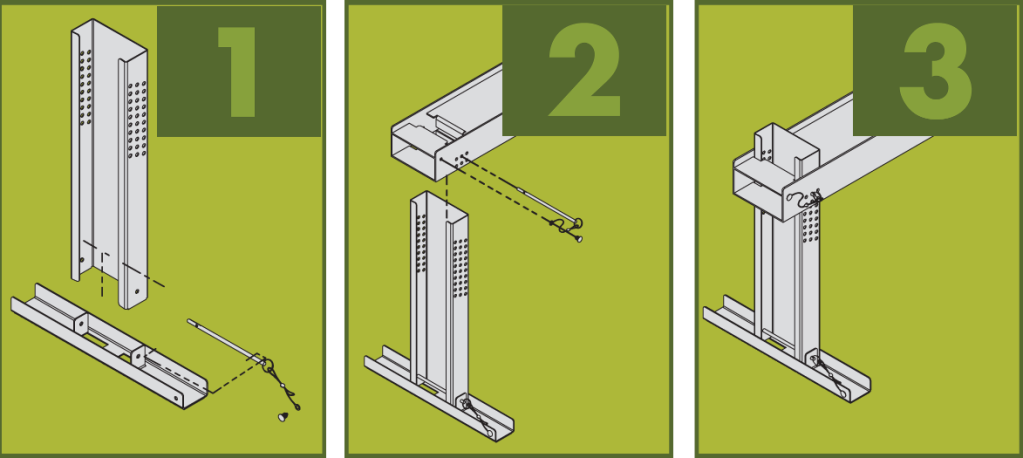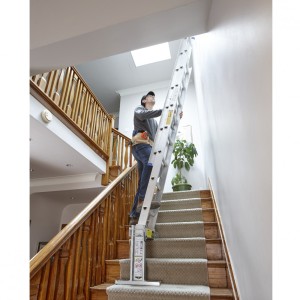It’s a question as old as stairs themselves: How do you use a ladder on them?
Sure, there are expensive specialty ladders out there that bend and articulate and transform, but what about those of us who can’t afford a $400 ladder, and just want to use the trusty single or extension ladder already hanging in the garage?
There are lots of ways to do it, but never has there been a solution as simple, safe, and cost-effective as what we’re going to show you today. First, though, let’s explore why this is such a big problem.

NOT the solution we were looking for
Why would I want to use a ladder on stairs?
Chances are if you own a home or are any sort of trade professional, you’ve faced one of these situations:
- You need to paint a wall along a staircase
- You need to change a light bulb in a fixture above a staircase
- You want to hang pictures along stairs
- You’re installing a new light fixture in a stairwell
If you’re a home owner or a DIY-type renter, these situations can be particularly annoying as they don’t come up often, but they are bound to come up. And when they do, you know you need a solution, but it’s for such a small problem that the solution is often more trouble than it’s worth. You’d be surprised at how many people are writing to tell us they can finally change that light bulb that’s been out for years.
If you’re a professional, particularly a painter or drywaller, then you’re familiar with some of the commercial solutions that are already available on the market – leg extenders and wedge-style tools, in particular. You’re also familiar with their shortcomings:
- Leg extenders are expensive and need to be installed permanently on the ladder, so you have to buy lots of them and they make the ladder more cumbersome to carry and use.
- Wedge-style tools are big and bulky, and while versatile, not as safe and sturdy as they should be on stairs (because they’re not designed specifically for use on stairs).
You’d also be shocked at how many professionals tell us they still just use a concrete block, some paint cans, or other random materials to prop up one leg of the ladder. Working like this is incredibly dangerous, which may help to explain why falls are still one of the leading causes of death, and nearly half of all fatal falls are from ladders.
The old safest solutions
Once we identified the problem, we asked ourselves: “Can we be the only ones struggling with this?” We started talking to people – friends, colleagues, professionals – and they confirmed that we weren’t alone. Everybody was looking for a better way to do this.
We found 2 answers that we considered genuinely safe.
1. Make-shift scaffolding
The folks over at This Old House provide a great idea for DIY scaffolding. It’s stable, safe, and professional. Even better, once it’s up it lets you cover the whole wall without having to adjust it.

But, there are some serious limitations:
- You need 2 ladders
- It only works if you have an overhanging wall to prop the lower ladder up against
- You need additional materials that are sturdy enough to support your whole weight.
- It is definitely a makeshift hack
2. Build your own ladder platform
Then we found this guide to building your own ladder platform at home. What a great idea! It’s stable. It’s as sturdy as you want it to be. It’s easy to set up, and easy to move. But this solution, too, had its share of problems: It’s custom-built to a very specific riser height, so it’s a single-use solution; and the solution in this case is way more work than the problem you’re trying to solve.
But we really loved the solution. So we asked ourselves: Can we build a better platform? And the answer was “Yes.”
So we did.
Ideal Security’s Ladder-Aide PRO, a ladder stabilizer for extension ladders.

How to use a ladder on stairs with the Ladder-Aide
Using the Ladder-Aide is simple. It sets up in just 3 easy steps:

- Place the base on the lower stair and slide the upright into the base.
- Second, you slide the platform onto the upright, and lower it until the it sits level on the upper step.
- Third, insert the locking pins.
That’s all there is to it. Now you’ve got a stable, secure platform for your ladder. Grab your ladder, place it on top of the platform – making sure to keep the ladder’s feet in between the platform’s safety ridges – and you’re good to go.You can paint, swap out that old light bulb, hang a picture, whatever you need.
There’s nothing to build. You can use it with most light- or medium-duty single and extension ladders. There’s nothing to install, so you can pick whichever ladder is right for the job at hand, and if you don’t need it, it’s out of the way. All the components pack up and store inside the platform itself, so it doesn’t take up a ton of space and it’s easy to keep it around for when you need it. And it’s so simple that if you can use a ladder, you can use the Ladder-Aide.

.png)
